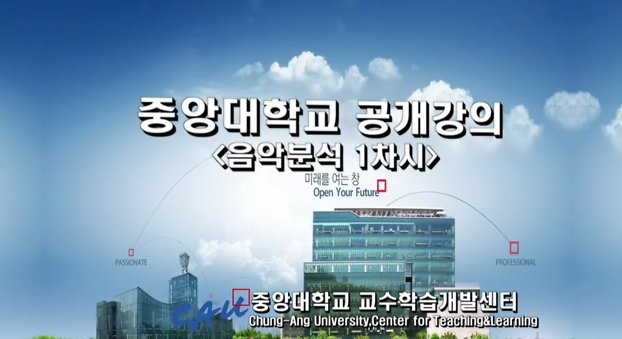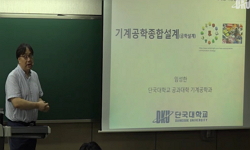This study examines the recruitment of talent through careful selection in the early Joseon period and the management of personnel. It also examines the operational aspects of Hongmunrok (弘文錄). First, the previous case of Hongmunrok, Mujaelog (...
http://chineseinput.net/에서 pinyin(병음)방식으로 중국어를 변환할 수 있습니다.
변환된 중국어를 복사하여 사용하시면 됩니다.
- 中文 을 입력하시려면 zhongwen을 입력하시고 space를누르시면됩니다.
- 北京 을 입력하시려면 beijing을 입력하시고 space를 누르시면 됩니다.

조선전기 초택(抄擇) 인사 운영과 홍문록(弘文錄) = Carefully Selected Personnel Management and Hongmunrok(弘文錄) in the Early Joseon Period
한글로보기부가정보
다국어 초록 (Multilingual Abstract)
This study examines the recruitment of talent through careful selection in the early Joseon period and the management of personnel. It also examines the operational aspects of Hongmunrok (弘文錄). First, the previous case of Hongmunrok, Mujaelog (武才錄)・Sayulog (師儒錄)・Seungmunlog (承文錄) operation case was examined. Talent recruitment through careful selection mainly occurred for jobs that required specific skills or long-term training. The practice of carefully selecting and preparing a person for a specific task started the 15th century. Hongmunrok was implemented as an extension of this form of personnel management. Hongmunrok recruits were first selected through the recommendation of Hongmun-gwan (弘文館) staff, then reviewed and selected by the human resources department (吏曹), and then reviewed and selected by the State Council of Joseon (議政府). The human resources department and the State Council of Joseon were able to revise the number of people selected while reviewing the list. The list determined in this way was finally reviewed and approved by the king. Hongmunrok holders were even able to gain authority as members of a young elite of the time. As time passed, the recommendations of current Hongmun-gwan employees became more important, and the human resources department and the State Council of Joseon’s recommendations gradually became less important. However, since recommendation was the decisive factor in the selection of talent, including Hongmunrok, there was a lot of room for subjectivity. This hindered the public operation of personnel. For this reason, the recruitment of talent through careful selection was abolished, and it is thought that only Hongmunrok was operated due to the nature of Hongmun-gwan as an institution.
국문 초록 (Abstract)
본고는 조선전기 엄선을 통한 인재 선발과 이를 활용한 인사 운용을 살펴보고, 그러한 연장선상에서 홍문록 운영 양상을 살펴보았다. 먼저 홍문록 이전의 사례인 무재록・사유록・승문록 ...
본고는 조선전기 엄선을 통한 인재 선발과 이를 활용한 인사 운용을 살펴보고, 그러한 연장선상에서 홍문록 운영 양상을 살펴보았다. 먼저 홍문록 이전의 사례인 무재록・사유록・승문록 운영 사례를 살펴보았다. 엄선을 통한 인재 선발은 주로 특정한 능력 혹은 장기적인 대비가 필요한 직무들이었다. 특정 업무를 담당하기 위한 사람을 미리 선별하는 것은 15세기부터 운영되었다. 홍문록은 이러한 인사 운용의 연장선에서 시행되었다. 홍문록은 홍문관원의 1차 추천, 이조의 검토・마감, 의정부의 검토・마감을 거쳐 선발되었다. 이조와 의정부는 명단을 검토하면서 선발 인원을 수정할 수 있었다. 이렇게 정해진 명단은 최종적으로 왕이 검토를 통해 최종 승인되었다. 홍문록 등재자는 당대의 청반이라는 권위까지 얻을 수 있었다. 시간이 흐를수록 현직 홍문관원의 추천이 중요해졌고, 이조・의정부 추천 규정은 점차 사문화되었다. 그런데 홍문록을 비롯한 엄선을 통한 인재 선발은 추천이 결정적 요소였기 때문에 주관이 개입될 여지가 많았다. 이는 인사의 공적 운영을 저해했다. 이러한 이유로 엄선을 통한 인재 선발은 폐지되었으며, 홍문관의 기관 특성상 홍문록만 운영되었던 것으로 생각된다.
참고문헌 (Reference)
1 최승희, "홍문록고" 15・16 (15・16): 269-288, 1978
2 오종록, "조선초기 양계의 군사제도와 국방" 국학자료원 2014
3 이종서, "고려・조선의 친족용어와 혈연의식 : 친족관계의 정형과 변동" 신구문화사 2009
4 "經國大典"
5 李宗城, "梧川集"
6 "朝鮮王朝實錄 (太祖~明宗)"
7 남지대, "朝鮮後期 黨爭의 綜合的 檢討" 한국정신문화연구원 1992
8 최승희, "朝鮮初期 言論史硏究" 지식산업사 2004
9 최이돈, "朝鮮中期 士林政治構造硏究" 一潮閣 1992
10 이재호, "弘文館 機能의 變遷" 16 : 341-359, 1977
1 최승희, "홍문록고" 15・16 (15・16): 269-288, 1978
2 오종록, "조선초기 양계의 군사제도와 국방" 국학자료원 2014
3 이종서, "고려・조선의 친족용어와 혈연의식 : 친족관계의 정형과 변동" 신구문화사 2009
4 "經國大典"
5 李宗城, "梧川集"
6 "朝鮮王朝實錄 (太祖~明宗)"
7 남지대, "朝鮮後期 黨爭의 綜合的 檢討" 한국정신문화연구원 1992
8 최승희, "朝鮮初期 言論史硏究" 지식산업사 2004
9 최이돈, "朝鮮中期 士林政治構造硏究" 一潮閣 1992
10 이재호, "弘文館 機能의 變遷" 16 : 341-359, 1977
11 金宗直, "佔畢齋集"
동일학술지(권/호) 다른 논문
-
조선 영조 연간 이조낭선(吏曹郞選) 개혁과 홍문관 인사제도
- 한국학중앙연구원 한국학중앙연구원
- 김성희
- 2023
- KCI등재
-
- 한국학중앙연구원 한국학중앙연구원
- 임니나
- 2023
- KCI등재
-
- 한국학중앙연구원 한국학중앙연구원
- 나영훈
- 2023
- KCI등재
-
한국역사인물데이터베이스 설계 시론: 홍문록(弘文錄)을 예시로 하여
- 한국학중앙연구원 한국학중앙연구원
- 김바로
- 2023
- KCI등재




 KCI
KCI DBpia
DBpia







